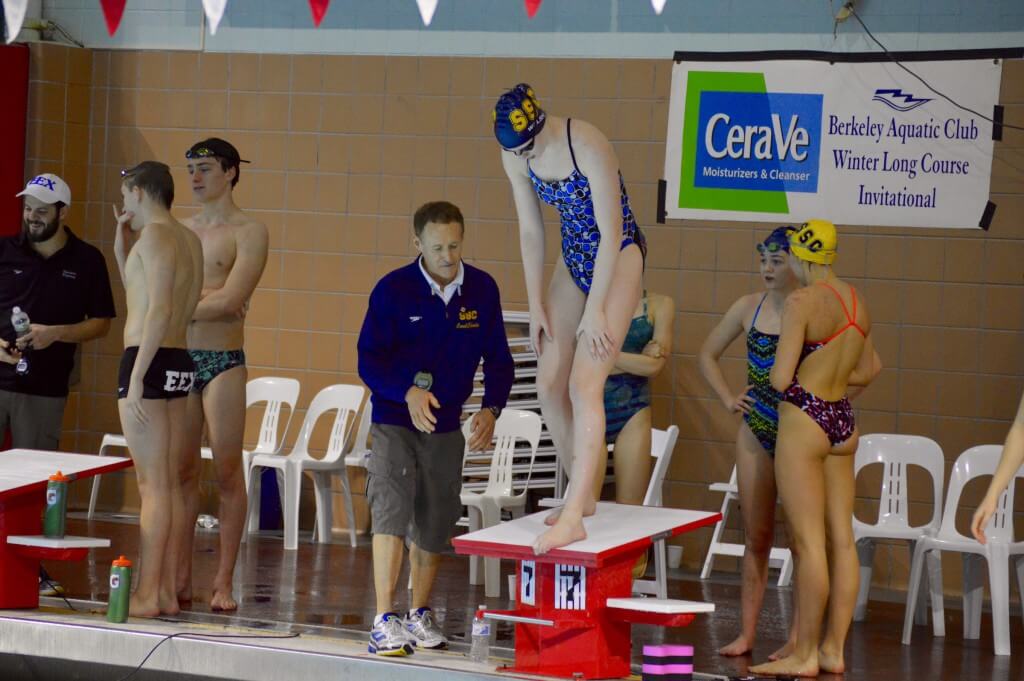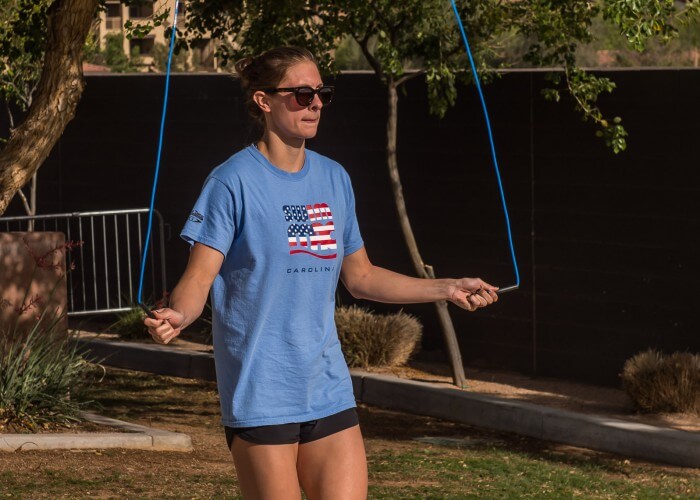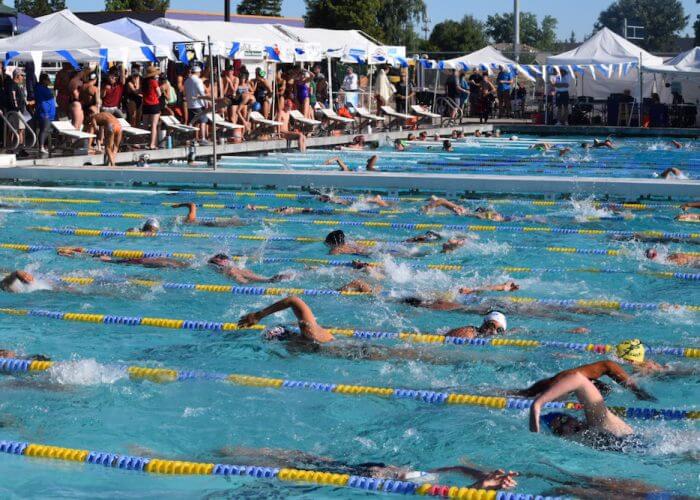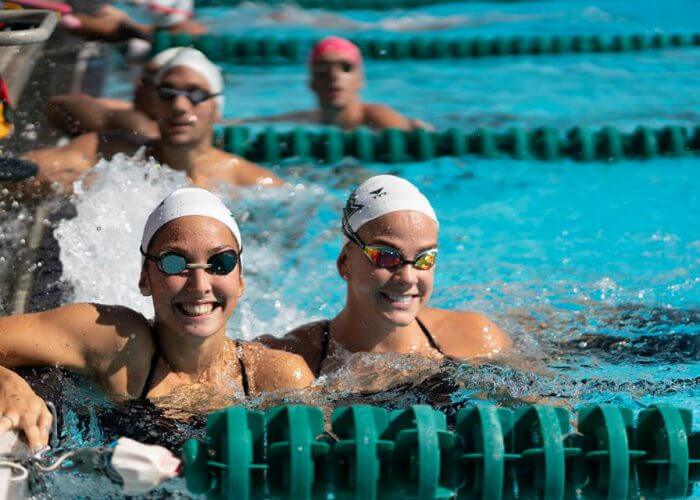Is a Proper Warm Up the Key to Fast Swimming?

By Devin Javens, Swimming World College Intern.
Diving into the pool to warm up can be something swimmers dread. The simple thought taking those first strokes of warm up despite your sore, aching muscles can be less than pleasant. But come race day, warming up is the perfect thing to get your mind and body ready to swim fast. As swimmers get older, freedom is sometimes given to decide how and when to warm up before their races. It’s no secret that warming up is extremely beneficial for all athletes, but being able to find the perfect pre-race warm up specifically catered to you can be the secret to success.

Photo Courtesy: Peter H. Bick
Warming up can start even before jumping into the pool. However, this doesn’t include static stretching, which was traditionally thought to be beneficial to loosening muscles to prepare for a swim. The idea of incorporating a dynamic warm up routine has become a better alternative than typical static stretching. In case you’re unfamiliar with the terms, static stretching refers to holding a stretch in one end position for a period of time, typically between 15 and 60 seconds. In contrast, dynamic stretching requires joints and muscles to be stretched through their full range of motion without being held still – the body is in constant motion. This type of movement prepares your body and nervous system for the demands the sport requires.
USA Swimming writes that static stretching before swimming can negatively impact one’s performance by decreasing muscle strength and power, affecting things like reaction time and sprint performances. The purpose of a dynamic warm up is to increase muscle and body temperature to best prepare the body to swim. Dynamic warm up activities can include jumping rope, skipping, core exercises, and many others.

Each swimmer does a general warm up before competition, but not all swimmers know what they should do. This is very much dependent on what you are swimming that day; however, certain guidelines are likely met by all swimmers during general warm up. In each warm up, a swimmer will most likely incorporate some kicking, drill work, and – most importantly – pacing, which is usually specific for your first event. For example, an analysis of Michael Phelps‘ warm up routine on livestrong.com reveals that his warm up routine consisted of the following: “swims of 800, 600, 400 and 200 meters, a swim-kick-pull drill, then a few 25-meter sprints.”
Although not warming up enough is usually a concern for most swimmers, athletes must also be sure to not warm up too much, which can also affect your performance. An article by Scott Riewald and Scott Rodeo published in Human Kinetics reminds athletes to “swim hard enough to warm the body but not so hard that fatigue sets in before stepping on the blocks.” Swimmers want to feel loose and ready to go for their races but not to the level of exertion that you feel after completing a workout.
Many athletes prefer to swim a second warm up closer to competing in their event, especially if it has been a while since completing a general warm up. Many swimmers typically start their second warm up about 15 to 20 minutes from when they dive in for their race. Although second warm ups are significantly shorter than a general warm up, they are necessary for preparing the body and mind to race. This is sometimes necessary for athletes to refocus on another event after already swimming a different race and/or if you have been sitting around for a long time just waiting for your event. Not only do second warm ups allow the athlete to focus on the event they’re about to swim but it also increases the heart rate and body temperature to make a swimmers race-ready.

Photo Courtesy: Jonas Gutzat
Swimmers may include a few 25s or 50s at a high intensity to simply get the blood flowing and simulate their race pace for their next event. This is usually done through some pace work; however, it is up to the athlete to determine what best prepares them for a race. For example, some athletes even prefer not doing a second warm up – but most coaches and swimmers encourage warming up more than once.
Warming up on race day is the perfect way to prepare your body and mind for the races ahead. There’s a ton of science behind the benefits of warming up, how to warm up, and more. However, when it comes down to it, your warm up should cater to your own needs and build your confidence for the race ahead. A lot of trial and error can go into finding what works for you, but finding your own perfect warm up can help you best prepare for successful outcomes in each of your swims.
-All commentaries and research are completed by the author and do not necessarily reflect the views of Swimming World Magazine nor its staff.




Jill Burket Ladd
Aislinn
?
Paige Orlando you should follow this Facebook page!
Katie Little, for Bree!!
Tiffany Galvan thank you! I’ll show her.
Alison Bryanna no warmup is ?
Ashley he